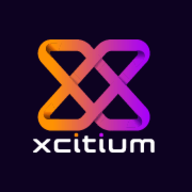

Find out what your peers are saying about CrowdStrike, SentinelOne, Microsoft and others in Endpoint Detection and Response (EDR).
| Product | Market Share (%) |
|---|---|
| Microsoft Defender for Endpoint | 9.8% |
| Open EDR | 1.0% |
| Other | 89.2% |


| Company Size | Count |
|---|---|
| Small Business | 79 |
| Midsize Enterprise | 34 |
| Large Enterprise | 87 |
Microsoft Defender for Endpoint is a comprehensive security solution that provides advanced threat protection for organizations. It offers real-time protection against various types of cyber threats, including malware, viruses, ransomware, and phishing attacks.
With its powerful machine-learning capabilities, it can detect and block sophisticated attacks before they can cause any harm. The solution also includes endpoint detection and response (EDR) capabilities, allowing organizations to quickly investigate and respond to security incidents. It provides detailed insights into the attack timeline, enabling security teams to understand the scope and impact of an incident.
Microsoft Defender for Endpoint also offers proactive threat hunting, allowing organizations to proactively search for and identify potential threats within their network. It integrates seamlessly with other Microsoft security solutions, such as Microsoft Defender XDR, to provide a unified and holistic security approach. With its centralized management console, organizations can easily deploy, configure, and monitor the security solution across their entire network.
Microsoft Defender for Endpoint is a robust and scalable security solution that helps organizations protect their endpoints and data from evolving cyber threats.
Open EDR is an advanced solution designed to offer comprehensive endpoint detection and response capabilities. It focuses on providing strong security features tailored to meet the specific needs of modern IT environments.
Open EDR offers robust features for detecting, investigating, and responding to threats within an IT ecosystem. Its design caters to professionals seeking efficient threat management tools. By integrating seamlessly into existing infrastructures, it enhances security operations with real-time threat detection and efficient incident response. As a versatile tool, Open EDR supports a wide array of security use cases, making it an essential part of contemporary IT security strategies.
What are the standout features of Open EDR?In the financial sector, Open EDR is often implemented to safeguard sensitive data while ensuring compliance with industry regulations. Tech firms utilize it to maintain comprehensive oversight and control over their digital environments, adapting quickly to emerging threats and vulnerabilities.
We monitor all Endpoint Detection and Response (EDR) reviews to prevent fraudulent reviews and keep review quality high. We do not post reviews by company employees or direct competitors. We validate each review for authenticity via cross-reference with LinkedIn, and personal follow-up with the reviewer when necessary.